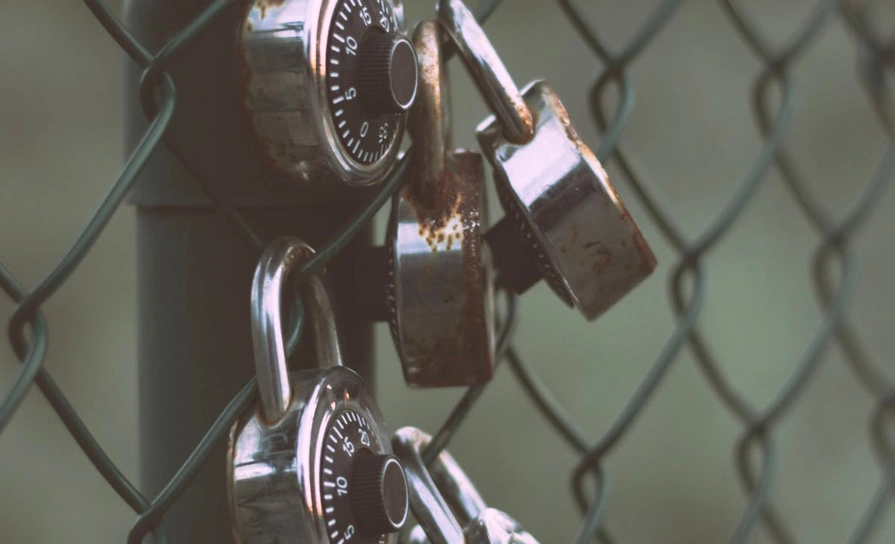One of the most essential things to keep in mind when you’re working on your door closer is that if it doesn’t have enough lubricant, then you’ll find yourself breaking your arm trying to open the door. This is where a hydraulic door closer comes in handy because all it needs is some serious handiwork.
A hydraulic door closer is like any other hydraulic machine. They need lubrication to function properly and safely. There are three ways to do this.
One, you can use a dry film lube on the outside of the parts, two, you can apply grease through a tube that feeds into the mechanism, or three, you can lubricate the oil bath with a small amount of oil on the. To lubricate a hydraulic door closer, you should first remove the old oil from it. This can be done by using a screwdriver to unscrew the bolts from the outside of the door and then vacuuming out the old grease with a shop vacuum cleaner.
Next, fill up your new container with a gallon or two of hydraulic oil before reattaching the bolts. Make sure that you tighten them firmly, so they don’t wobble and loosen while in use. Lubricating a hydraulic door closer is usually done once a year.
It’s important to know how to lubricate the hydraulic door closer because in the event of a failure, the opener needs to be repaired or replaced. You might not know this, but the oil in a hydraulic door closer is designed to last around a year. You’ll usually need to lubricate your door closer every six months or so.
The good thing is that it’s easy to do. Here are four steps you can follow:You will need a small brush. If you are unsure what kind of door closer you have, have an experienced locksmith look at it for you. Use the brush to apply lubricant to the gears at the top and bottom of the door closer.
Place the brush under the blade and apply lubricant as well.
Do storm door closers swear out?
Some insurance companies offer increased coverage or lower rates for storm door closer, but it’s not always the case. Just because a storm door closer swears out doesn’t mean that they don’t make mistakes while they’re at work.
The company, when in doubt about security systems installed for more than six months, will try to contact the customers in the most expedient way possible. If we cannot contact the customer and the security system is still configured as it was when installed, then they should have no objection to us cutting off power or telecommunication service to the door controller.
There is no evidence of this. The door closer is a normal, everyday item that can lead to a lot of laughs if someone has some practice in the art. But what happens when the possibility of closing the door to your house becomes nonexistent? This was exactly the case for one Berkeley resident who called our locksmith service at 9PM on Saturday evening after her storm door’s closer broke.
Fortunately, and because she had been so patient with us all night, our team found an old shiny piece of metal nearby and gave it a new home in her storm door. In the case of emergency lockouts, the storm door closer swears out.
This is what we hear from other locksmiths. There are different types of storm door closers. They might be automatic or they might not. While storm door closers are often made of steel, they still rely on the weight of the door to hold them in place.
This is because they are not mounted on hinges but fitted directly into the door frame. When air pressure is too high, these storm door closer may be forced open by wind and rain.
How do you reset a door closer?
Here are the steps to reset a door closer: 1) Remove the screws from the inside of the door closer. 2) On the outside, remove the clip from above and below the door closer. 3) Extract as much slack as you can from any of your wires connected to the unit (usually these are not visible).
On each wire, unfasten any clips that may be holding it in place. 5) Unscrew the wire that is inaccessible on either side of the door closer and then wrap it around a screwdriver handle to create tension. A door closer may be set to a specific number of seconds before the door locks.
To reset a door closer, you would need to press the reset button on the closer. On some models, this will also cancel the timer so that it does not run during regular use. If you want to reset a door closer, push it in hard, and then pull it back. Sometimes all you have to do is push the button again.
If you’re having trouble figuring out how to reset a door closer, it can be done by putting some force on the bottom of the door and holding it closed for five seconds. If your door closer stopped working or the lock is stuck, you may need to reset it using a screwdriver or by using pliers. A door closer is designed to automatically close a door.
However, it may stop working unexpectedly. To reset the device, you must pull the chain manually down. If it has a button and cord, you must push the button while pulling on the cord at the same time.
What kind of oil do you put in a door closer?
There are three types of oil that you should use to lubricate a door closer’s bearings. The first type is of course oil, which is what the lubricator will be filled with. The second type is WD-40, which has excellent lubricating properties and can be used in place of oil.
The third type is graphite, which comes in the form of a pencil lead or an eraser shaving. You will need to purchase these items separately and apply them directly to the bearings as well as to the chain at the end of the door closer. There are three main types of lubricants that you can use with door closers: grease, oil, and hydraulic fluid.
The type of oil or grease you put in a closer largely depends on the application. Grease is typically used in doors that have small pivots, while oil is good for larger hinges and hydraulic fluid should be used in hinges that need to be adjusted. There are many types of door closer oil.
The most common is a non-drying oil that prevents the oil from sticking to metal parts of the door closer. The mechanism in this type of oil is designed to lubricate metal parts, preventing them from seizing up and stopping prematurely. Oils are used in many areas of the machine to lubricate moving parts.
They can also be used to control friction as well as provide heat. Oil is necessary for a variety of other things like powering gears, providing cooling, and preventing rust. The oil in a door closer is called pre-lube, and should be a simple-type oil. The most popular brands to use are WD-40 and PB Blaster.
If your door closer is not working properly, you need to apply more than the recommended amount of lubricant. The closer that you install on your door should be filled with oil, not just lubricant.
Does a hydraulic door closer swear out?
Does a hydraulic door closer swear out? The answer is yes. The hydraulic door closer is powered by a piston that uses hydraulic fluid as it moves back and forth. This fluid contains oil, and something like air can get into the piston which would make a bad situation worse.
A hydraulic door closer is a type of moving device that is installed on the outside of a building to close or open doors. The mechanism of this device works by using a piston and rod system for movement. These mechanisms are quite reliable and typically last for many years without any problems. There are times when a hydraulic door closer will swear out.
When this happens, your hydraulic door closer should be repaired. You may need to replace the hydraulic motor or just the seals around it. If you want to avoid costly repairs, it is best to call for a locksmith service immediately so that they can repair the door closer and make sure that no water enters your home.
On the other hand, if you don’t have a problem with water entering your home, then you should consider extending the life of your door closer by lubricating them with grease periodically to prevent from drying out and cracking over time.
A hydraulic door closer is the type of door closer that squeezes the door. This better seals the gap between the perimeter and the header, preventing heat loss in winter and cold air infiltration in summer. However, a hydraulic door closer can also use air instead of water to close the gap in order to save energy.
The hydraulic doors closer usually have a digital controller with an LCD screen where you can see all its data, including graphs of pressures and timings for closing or opening. The hydraulic door closer is a type of door closer that can open and close a door by pushing a piston in and out.
The hydraulic door closer uses the force of water to provide the energy for its operation. If you’re not sure if it uses hydraulics, look for a lever on either side of the closing mechanism. There is a lot of debate about the use of hydraulic door closers. Some people say they work all the time and are easy to operate.
Others say that they can break easily, can only be operated by a professional, and require too much time to operate. It’s not just the size of the lift that makes these systems better than manual doors, it’s also their speed. Many people believe the best way to make a hydraulic door closer swear out is through its valves.






